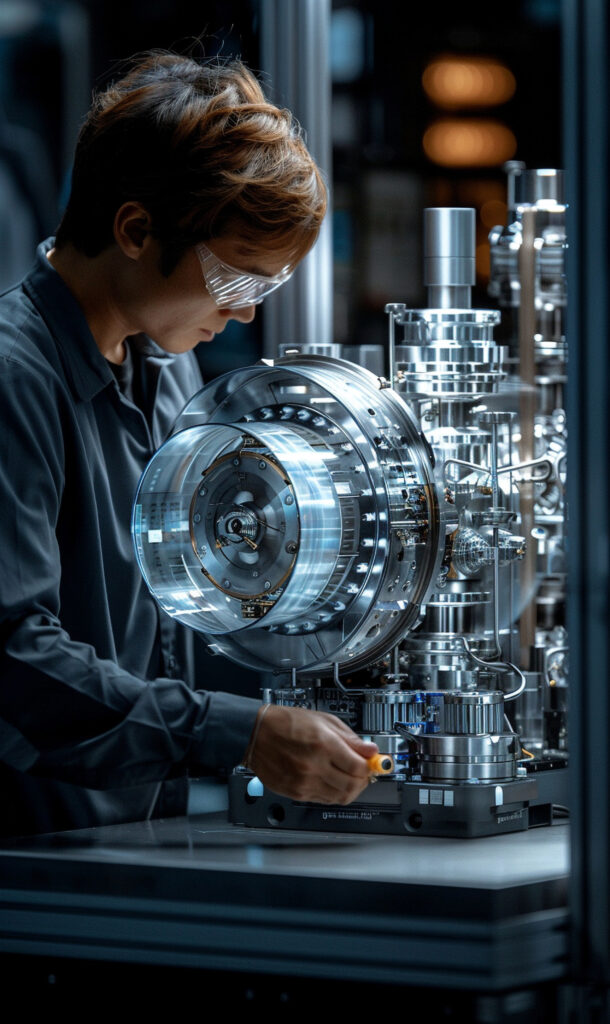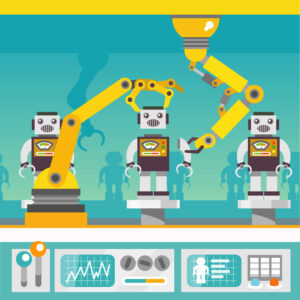Cobots in Gear Manufacturing: Enhancing Efficiency and Safety
How Cobots Are Transforming Gear Manufacturing for Safety and Efficiency Collaborative robots, commonly known as cobots, are transforming the manufacturing landscape. These innovative machines work alongside human operators, enhancing productivity and safety. Cobots are particularly impactful in gear manufacturing, where precision, efficiency, and flexibility are crucial. This article explores how startups are leveraging cobots to […]

How Cobots Are Transforming Gear Manufacturing for Safety and Efficiency
Collaborative robots, commonly known as cobots, are transforming the manufacturing landscape. These innovative machines work alongside human operators, enhancing productivity and safety.
Cobots are particularly impactful in gear manufacturing, where precision, efficiency, and flexibility are crucial. This article explores how startups are leveraging cobots to revolutionize gear production, focusing on the benefits, challenges, and future trends in this space.
The Rise of Collaborative Robots in Manufacturing

The introduction of cobots in manufacturing marks a significant shift from traditional industrial robots. Unlike their predecessors, cobots are designed to work safely with humans, sharing the workspace without the need for extensive safety measures like cages.
This flexibility allows them to be integrated into various stages of gear production, from assembly to quality inspection. Cobots are equipped with advanced sensors and software that enable them to detect human presence and adjust their operations accordingly.
This capability not only enhances safety but also allows for more efficient workflows, as human operators can collaborate with cobots without fear of accidents.
Enhancing Efficiency in Gear Manufacturing
Efficiency is a key concern in gear manufacturing, where precision and timing are critical. Cobots help address these challenges by performing repetitive tasks with high accuracy.
For instance, in gear assembly, cobots can handle the precise placement of small components, reducing the margin of error and speeding up the production process.
Moreover, cobots can operate continuously without fatigue, ensuring consistent output and reducing downtime. This capability is particularly valuable in high-volume production environments where maintaining a steady pace is essential.
Improving Safety and Reducing Workplace Injuries
One of the most significant advantages of cobots is their contribution to workplace safety. In gear manufacturing, workers often handle heavy machinery and components, which can lead to injuries. Cobots can take over these physically demanding tasks, reducing the risk of accidents.
Furthermore, cobots are designed to stop or slow down if they come into contact with a human, preventing accidents. This safety feature is critical in environments where human operators and robots work in close proximity.
Flexibility and Adaptability in Gear Production
Cobots are known for their flexibility, making them ideal for gear manufacturing, where production requirements can vary. Startups are developing cobots that can be easily reprogrammed to handle different tasks, allowing manufacturers to adapt quickly to changing demands.
This adaptability is particularly beneficial in small and medium-sized enterprises (SMEs) that may not have the resources to invest in multiple specialized machines. Cobots provide a cost-effective solution by performing a variety of tasks, from assembly to quality control.
Cost-Effective Solutions for SMEs
The cost of automation has traditionally been a barrier for SMEs, but cobots offer a more affordable option. Startups are developing cobots that are not only less expensive than traditional industrial robots but also easier to implement and maintain.
Cobots require less programming expertise, and their intuitive interfaces make them accessible to operators with minimal training. This ease of use reduces the overall cost of adoption and allows SMEs to compete with larger manufacturers.
The Role of AI and Machine Learning in Cobot Development
Artificial intelligence (AI) and machine learning are playing a significant role in the evolution of cobots. Startups are integrating these technologies into cobots, enabling them to learn from their environment and improve their performance over time.
For example, in gear manufacturing, AI-powered cobots can analyze data from previous tasks to optimize their movements, reducing cycle times and improving accuracy. This capability makes cobots more efficient and adaptable to different production scenarios.
Overcoming Challenges in Cobot Implementation
While cobots offer numerous benefits, their implementation is not without challenges. One of the primary obstacles is the integration of cobots into existing manufacturing processes. Startups must ensure that cobots can seamlessly work alongside human operators and other machinery without disrupting workflows.
Additionally, there is a need for standardized protocols to ensure that cobots operate safely and effectively in various environments. As cobots become more prevalent, industry-wide standards will be essential to their successful adoption.
Future Trends in Cobot Technology
The future of cobot technology in gear manufacturing looks promising, with several trends emerging. One such trend is the development of more autonomous cobots that require less human intervention. These cobots will be able to perform complex tasks independently, further increasing efficiency and reducing the need for manual oversight.
Another trend is the use of cobots in predictive maintenance. By analyzing data from sensors embedded in gears, cobots can predict when maintenance is needed, preventing costly breakdowns and extending the lifespan of equipment.
Startups Leading the Way in Cobot Innovation
Several startups are at the forefront of cobot innovation, developing cutting-edge solutions for gear manufacturing. These companies are focusing on creating cobots that are more intelligent, versatile, and user-friendly.
Some startups are working on cobots with enhanced vision systems that allow them to perform complex inspections and quality checks. Others are developing cobots that can be quickly reconfigured for different tasks, making them more versatile in the production environment.
The Impact of Cobots on Gear Manufacturing
Collaborative robots are revolutionizing gear manufacturing by improving efficiency, safety, and flexibility. Startups are playing a crucial role in this transformation, developing innovative cobot solutions that meet the evolving needs of manufacturers. As technology advances, we can expect to see even more sophisticated cobots that will further enhance the gear production process.
The adoption of cobots in gear manufacturing is not just a trend but a significant advancement in the industry. By working alongside human operators, cobots are creating safer, more efficient, and more adaptable production environments. As startups continue to innovate, the potential for cobots in manufacturing is bound to grow, offering exciting possibilities for the future of gear production.

